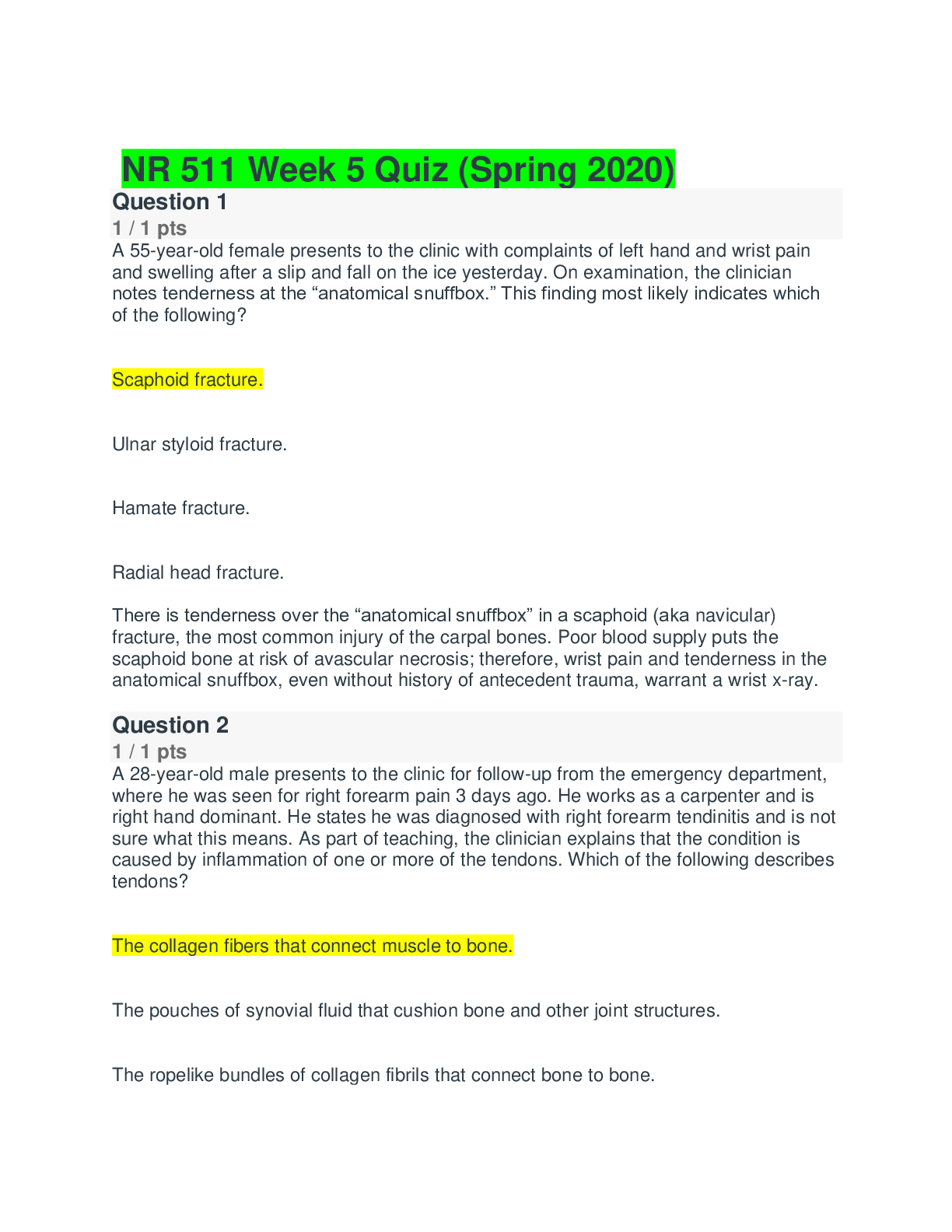*NURSING > QUESTIONS & ANSWERS > NR 503 Population Health, Epidemiology Week 8 Final Exam Study Guide. Chapter 16-20. Chamberlain Col (All)
NR 503 Population Health, Epidemiology Week 8 Final Exam Study Guide. Chapter 16-20. Chamberlain College of Nursing
Document Content and Description Below
NR 503 Week 8 Final Exam Study Guide; Chapter 16-20 1. Question: A large company institutes a new wellness program aimed at improving the health of its 50,000 employees. As a part of the program, all... employees are given physical examinations and screening tests. One of the tests given to male employees is the prostate specific antigen (PSA) test with all employees testing positive being referred to their private physician for a thorough examination involving the standard test, a digital rectal examination (DRE). What will happen to the apparent incidence rate of prostate cancer in the company during the first year of this program? 2. Question: A large company institutes a new wellness program aimed at improving the health of its 50,000 employees. As a part of the program, all employees are given physical examinations and screening tests. One of the tests given to male employees is the prostate specific antigen (PSA) test with all employees testing positive being referred to their private physician for a thorough examination involving the standard test, a digital rectal examination (DRE). On referral to their private physician, approximately 30% of men with a positive PSA are found to be negative for prostate cancer following the DRE. What is the sensitivity of the PSA test if DRE is assumed to be the gold standard? 3. Question: The following table shows data describing age-standardized incidence rates for cervical and breast cancer among Irish women living in Ireland, Irish immigrants to the United States, and daughters of Irish immigrants in the United States. The rates are reported for two age categories: adult women younger than 40 years of age and older than 40 years of age. Which cancer appears to be determined primarily by environmental factors? 4. Question: The following table shows data describing age-standardized incidence rates for cervical and breast cancer among Irish women living in Ireland, Irish immigrants to the United States, and daughters of Irish immigrants in the United States. The rates are reported for two age categories: adult women less than 40 years of age and greater than 40 years of age. Which cancer appears to be determined primarily by genetic factors? 5. Question: The following table shows data describing age-standardized incidence rates for cervical and breast cancer among Irish women living in Ireland, Irish immigrants to the United States, and daughters of Irish immigrants in the United States. The rates are reported for two age categories: adult women less than 40 years of age and greater than 40 years of age. Among women less than 40 years of age, what is the relative risk for cervical cancer comparing daughters of Irish immigrants to women in Ireland? 6. Question: The following table shows data describing age-standardized incidence rates for cervical and breast cancer among Irish women living in Ireland, Irish immigrants to the United States, and daughters of Irish immigrants in the United States. The rates are reported for two age categories: adult women less than 40 years of age and greater than 40 years of age. What is the proportion of cervical cancer risk in Irish women under 40 years of age that is attributable to moving to the United States? 7. Question: The following table shows data describing age-standardized incidence rates for cervical and breast cancer among Irish women living in Ireland, Irish immigrants to the United States, and daughters of Irish immigrants in the United States. The rates are reported for two age categories: adult women less than 40 years of age and greater than 40 years of age. Which cancer has a greater risk after the onset of menopause? 8. Question: The data in the table below are from a case-control study of a genetic factor associated with neurologic disease. Cases are newly diagnosed persons with the rare neurologic condition, and population controls were used for comparison. Investigators have hypothesized that a single point mutation in a gene on the 10th chromosome is strongly related to the disease. In the table, subjects who are homozygous for the mutation are denoted as m/m; subjects with only one mutated gene (heterozygous for the mutation) are denoted as A/m; and subjects with two normal alleles (homozygous for the absence of the mutation) are denoted as A/A. The unexposed category for the study is the A/A genotype. The neurologic condition is thought to be autosomal dominant with respect to the gene; therefore, one copy of the m allele should induce the development of the condition. What is the odds ratio for subjects with at least one copy of the mutant allele? 9. Question: The data in the table below are from a case-control study of a genetic factor associated with neurologic disease. Cases are newly diagnosed persons with the rare neurologic condition, and population controls were used for comparison. Investigators have hypothesized that a single point mutation in a gene on the 10th chromosome is strongly related to the disease. In the table, subjects who are homozygous for the mutation are denoted as m/m; subjects with only one mutated gene (heterozygous for the mutation) are denoted as A/m; and subjects with two normal alleles (homozygous for the absence of the mutation) are denoted as A/A. The unexposed category for the study is the A/A genotype. The neurologic condition is thought to be autosomal dominant with respect to the gene; therefore, one copy of the m allele should induce the development of the condition. Using the odds ratio calculated above, what is the population attributable risk percent for the mutation? 10. Question: The data in the table below are from a case-control study of a genetic factor associated with neurologic disease. Cases are newly diagnosed persons with the rare neurologic condition, and population controls were used for comparison. Investigators have hypothesized that a single point mutation in a gene on the 10th chromosome is strongly related to the disease. In the table, subjects who are homozygous for the mutation are denoted as m/m; subjects with only one mutated gene (heterozygous for the mutation) are denoted as A/m; and subjects with two normal alleles (homozygous for the absence of the mutation) are denoted as A/A. The unexposed category for the study is the A/A genotype. The neurologic condition is thought to be autosomal dominant with respect to the gene; therefore, one copy of the m allele should induce the development of the condition. Does this study confirm the hypothesis that the condition is caused by an autosomal dominant mutation? Why or why not? 11. Question: The basis for the healthy worker effect is that: 12. Question: Epidemiologists were interested in investigating the relationship between exercise and development of coronary heart disease (CHD) among women. Women ages 45 to 55 years were interviewed to determine their exercise habits at entry into the study. They were then followed for 15 years to determine the incidence of CHD in the cohort. What proportion of women who developed CHD had exercised once per week? 13. Question: Epidemiologists were interested in investigating the relationship between exercise and development of coronary heart disease (CHD) among women. Women ages 45 to 55 years were interviewed to determine their exercise habits at entry into the study. They were then followed for 15 years to determine the incidence of CHD in the cohort. Complete the table by calculating the incidence rates per 10,000 person-years and the rate ratios. 14. Question: Epidemiologists were interested in investigating the relationship between exercise and development of coronary heart disease (CHD) among women. Women ages 45 to 55 years were interviewed to determine their exercise habits at entry into the study. They were then followed for 15 years to determine the incidence of CHD in the cohort. The investigators concluded that these data demonstrate a causal relationship between exercise and subsequent CHD. Which of the Hill criteria best applies to this data? 15. Question: Epidemiologists were interested in investigating the relationship between exercise and development of coronary heart disease (CHD) among women. Women ages 45 to 55 years were interviewed to determine their exercise habits at entry into the study. They were then followed for 15 years to determine the incidence of CHD in the cohort. Other epidemiologists disagreed that this was a causal finding. What error do they claim that the study investigators made when interpreting the study findings? 16. Question: A cross-sectional study finds that persons younger than 70 years of age have a higher prevalence of pneumonia than those older than age 70. Which of the following is the best explanation for this observation? 17. Question: Meat consumption may be a risk factor for colon cancer. This hypothesis was investigated by collecting data on the amount of red meat consumed in regions of the United States and the colon cancer rates in those areas. The data are shown below: From this data, the researchers concluded that there is a significant dose-response association between red meat consumption and incident colon cancer. This observation may be incorrect because: 18. Question: Meat consumption may be a risk factor for colon cancer. This hypothesis was investigated by collecting data on the amount of red meat consumed in regions of the United States and the colon cancer rates in those areas. The data are shown below: 19. Question: Which of the following are characteristics of a disease that are important for the conduct of an effective screening program? More than one answer may be correct. 20. Question: Which factor can increase the positive predictive value (PPV) estimated for a screening program? 21. Question: When evaluating disease screening programs, what is a potential bias of the measure of their effectiveness when compared to symptom-based diagnostic approaches? 22. Question: What is the epidemiologic transition? 23. Question: For a cross-sectional study to be a valid test of a hypothesis, which of the following must be true? 24. Question: Which of the following measures is best suited to the evaluation of a screening program over time? 25. Question: After a hospital in a major city adds a high-risk pregnancy and neonatal intensive care unit (NICU), the rate of adverse childbirth outcomes doubles. Administrators are concerned that this indicates that the new unit is ineffectively run. Which of the following is a reason that this concern may be unfounded? 26. Question: In a study of immigrants to a new country, the rate of cardiovascular disease (CVD) in migrants is equivalent to the rate of CVD in their home country. This rate is lower than the rate for first generation family members and for their country of adoption. Which of the following could explain this observation? 27. Question: A large cohort study of 1,000 adult pairs of twins was conducted. Seventy-two pairs of twins were concordant for the disease under investigation, and 94 pairs of twins were discordant for the disease. In the remaining twin pairs, neither adult had the disease. What is the concordance rate for this disease among all twin pairs with at least one affected member? 28. Question: A large cohort study of 1,000 adult pairs of twins was conducted. 72 pairs of twins were concordant for the disease under investigation while 94 pairs of twins were discordant for the disease. In the remaining twin pairs, neither adult had the disease. From this observation, what is the most likely interpretation? 29. Question: Within a large manufacturing company, the division responsible for the production of agricultural chemicals has an annual rate of lung cancer equal to 17.3 cases per 100,000 persons. The rate of lung cancer for the rest of the company not exposed to agricultural chemical production is 13.6 cases per 100,000 persons. What inference can be made concerning the association of agricultural chemical production and lung cancer within this company? 30. Question: For an etiologic factor to be judged to be causally related to a disease, which of the following must be true? [Show More]
Last updated: 9 months ago
Preview 1 out of 21 pages
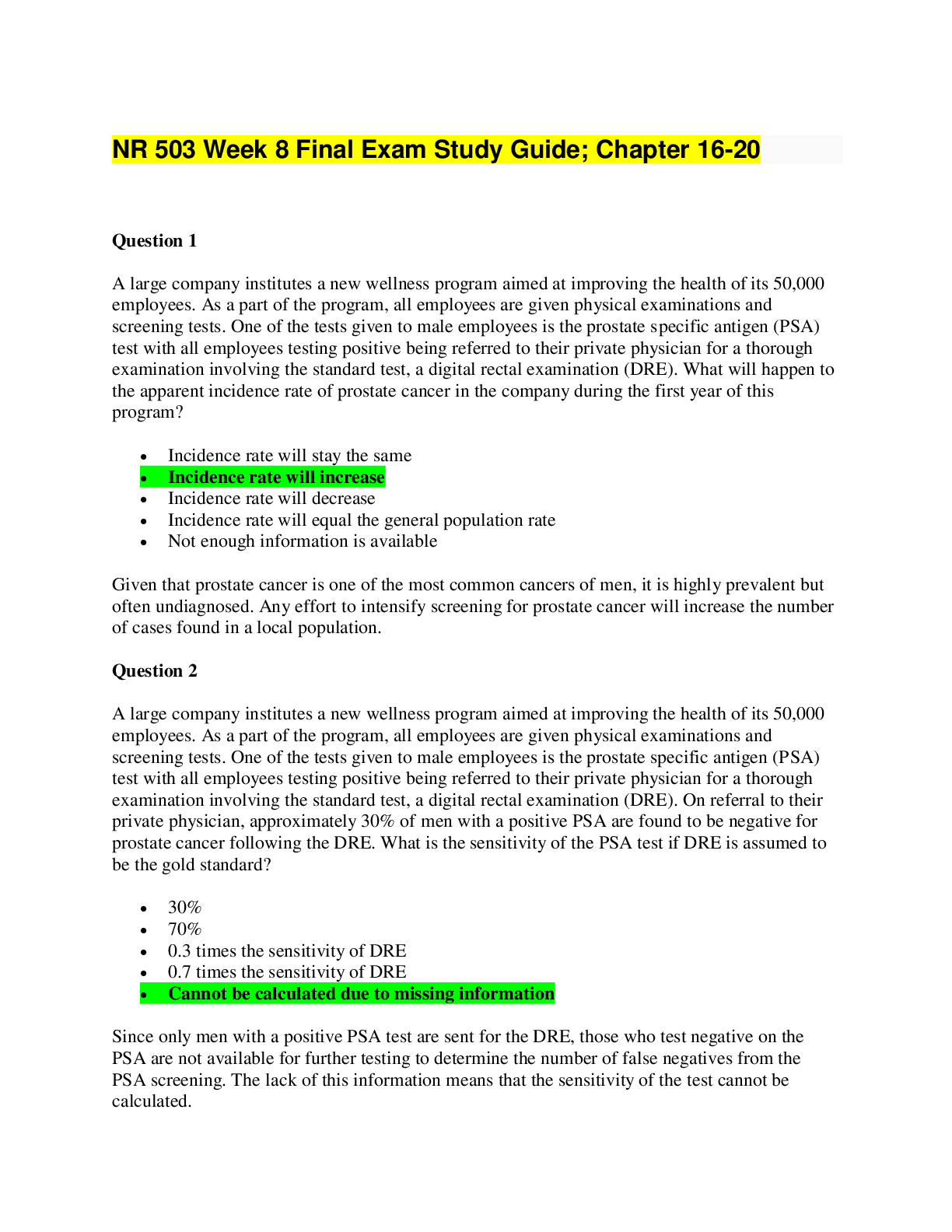
Reviews( 0 )
Document information
Connected school, study & course
About the document
Uploaded On
Apr 04, 2020
Number of pages
21
Written in
Additional information
This document has been written for:
Uploaded
Apr 04, 2020
Downloads
1
Views
122





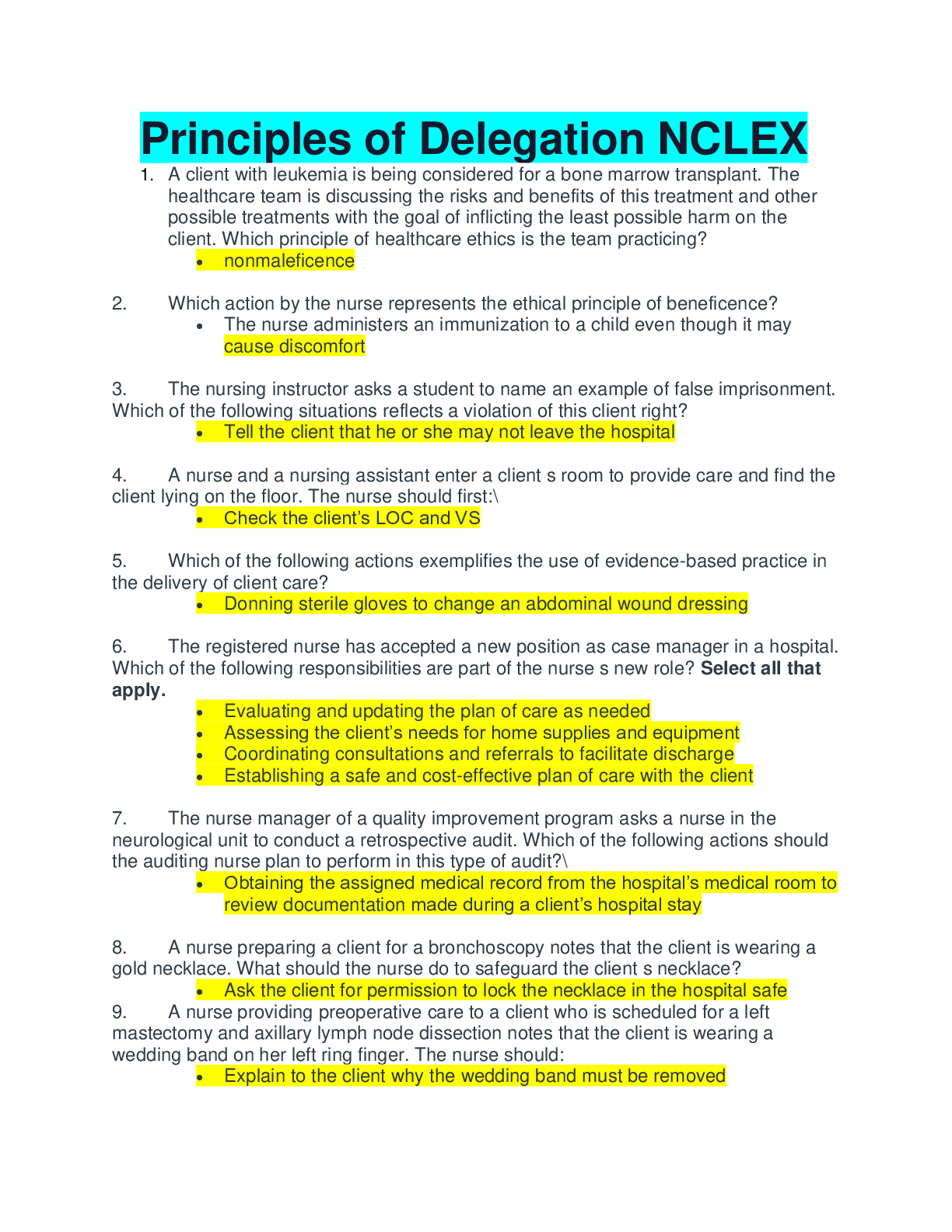

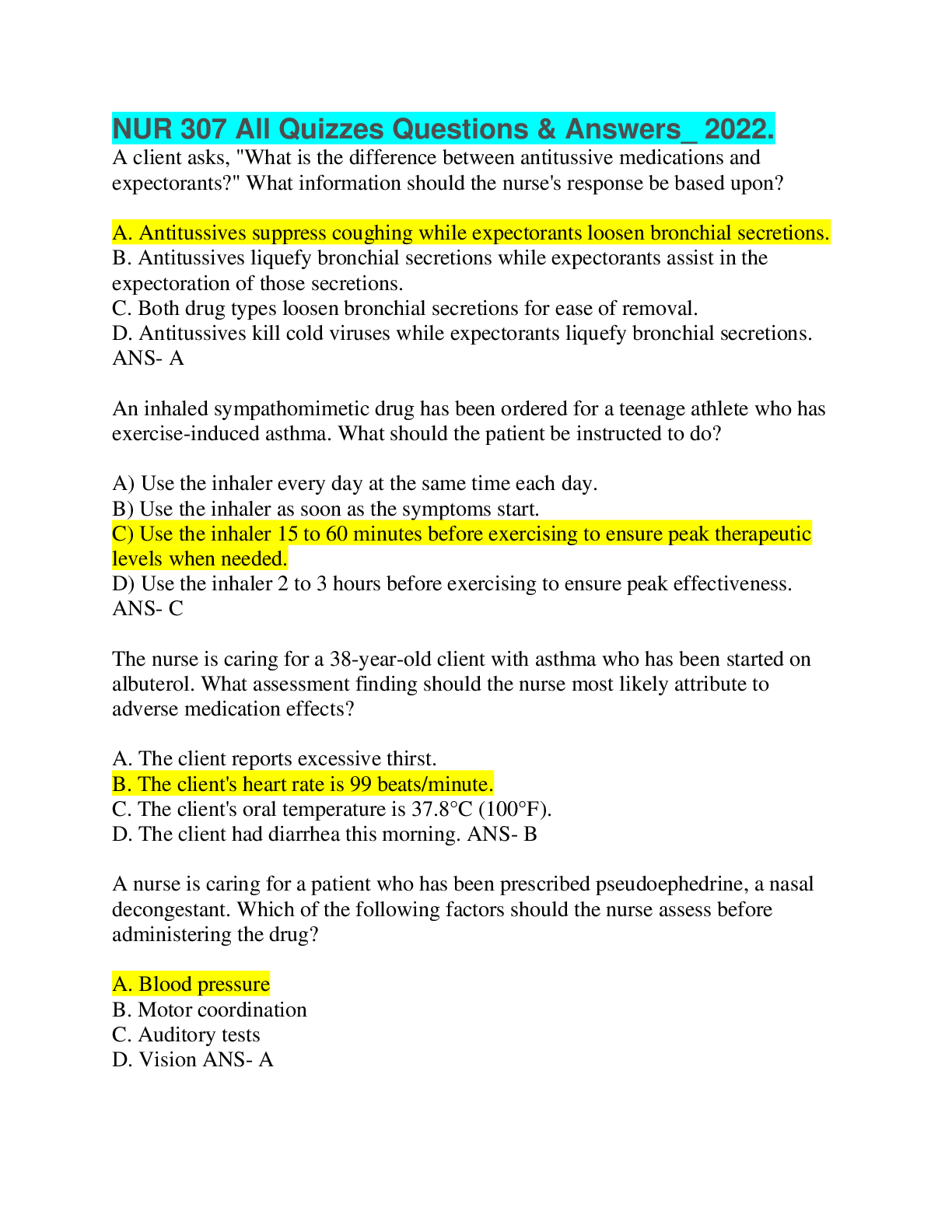
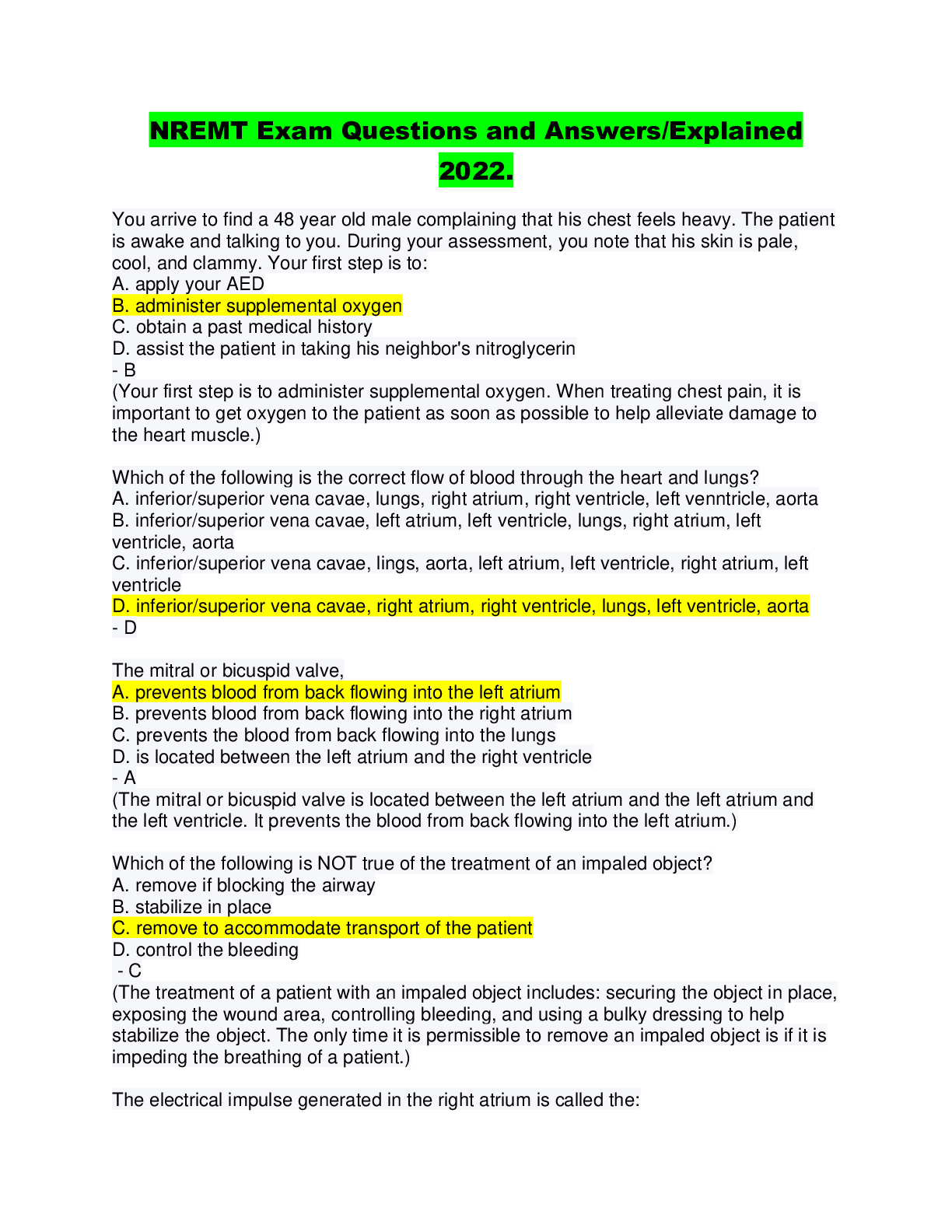

.png)

.png)
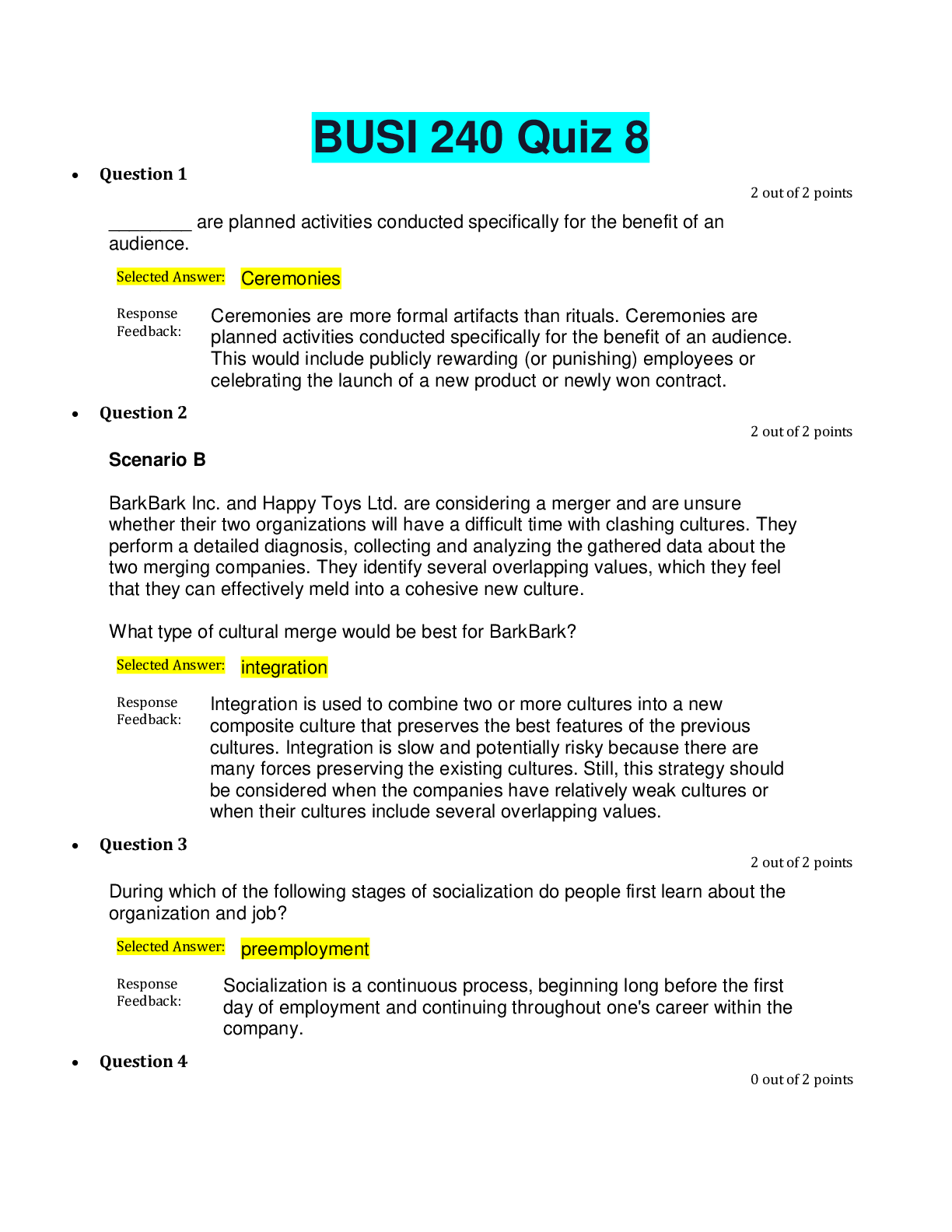

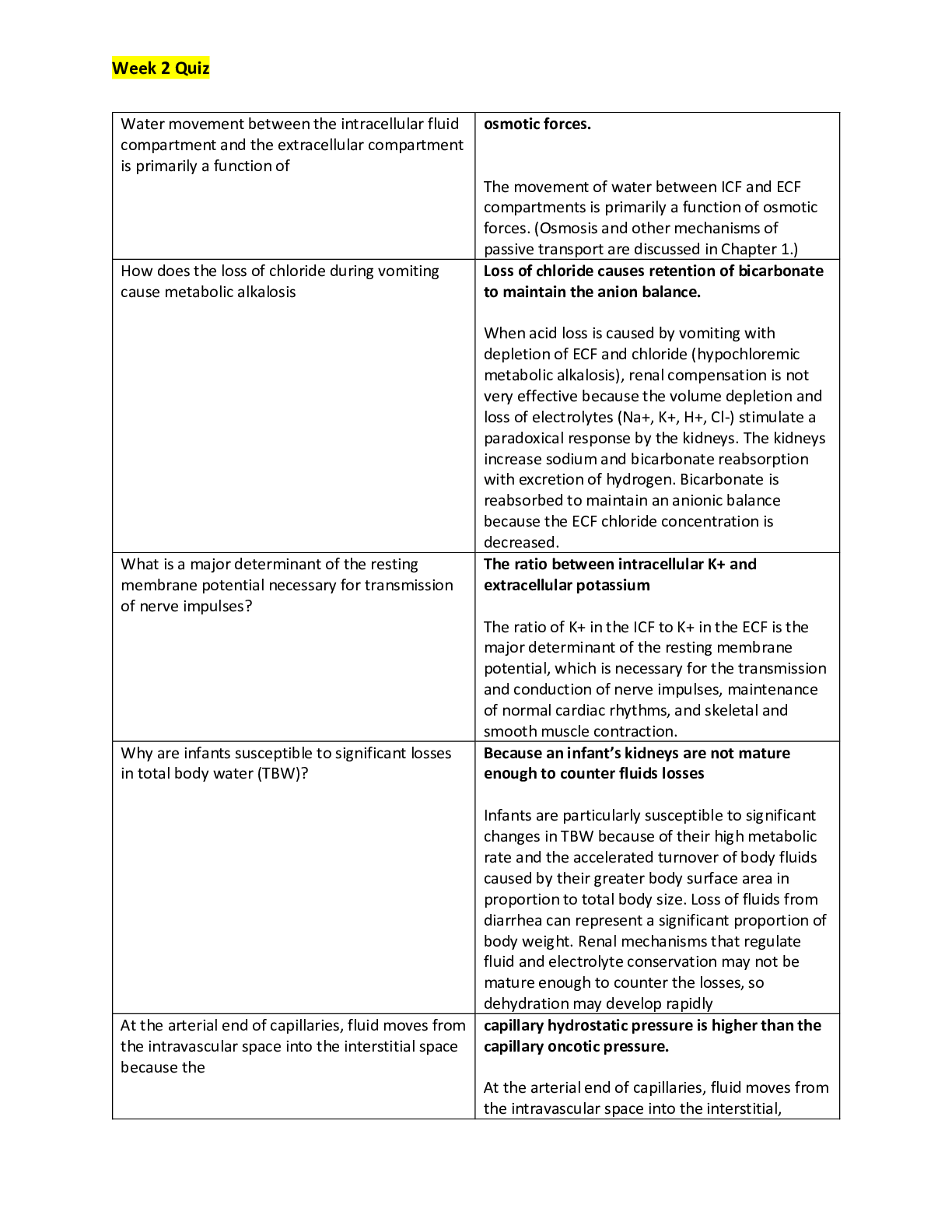









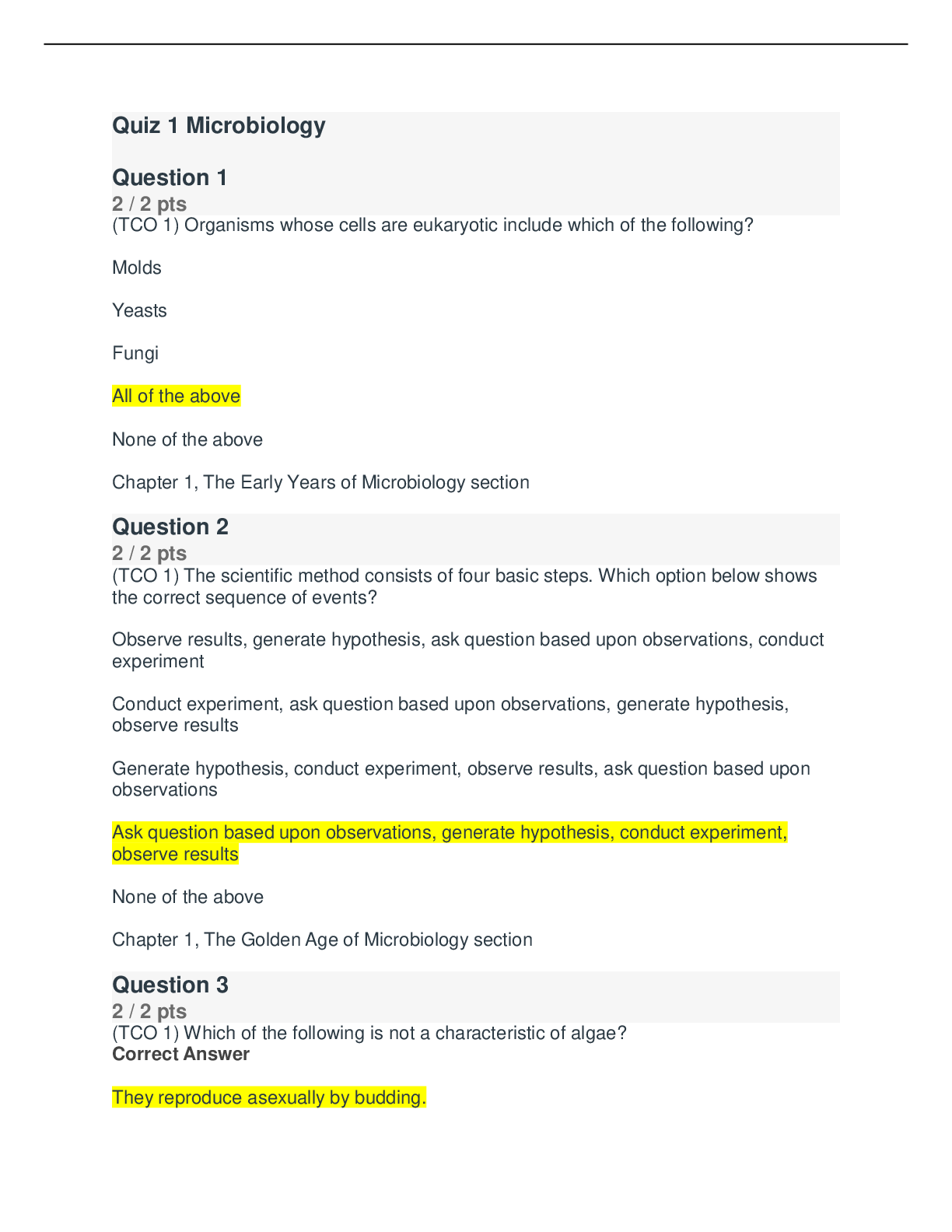

.png)






